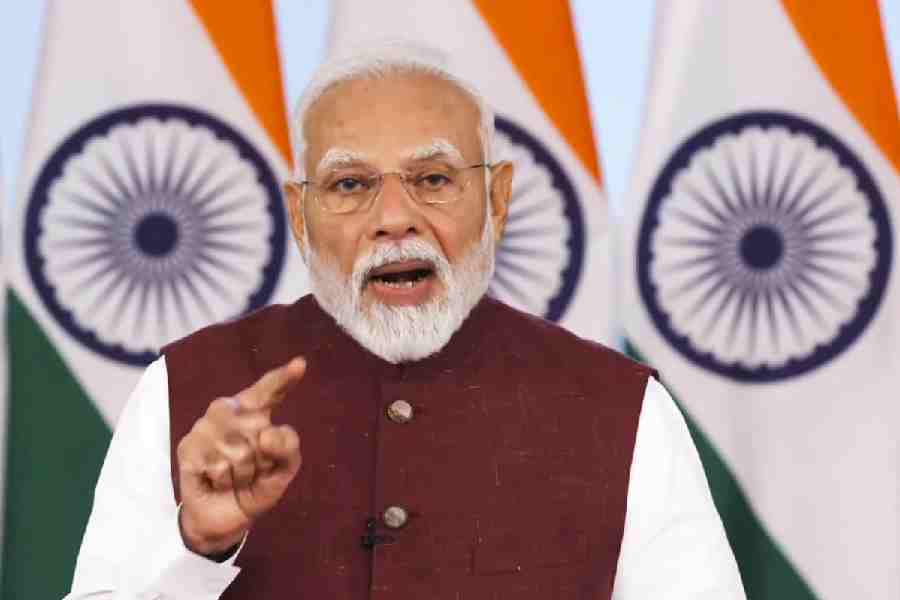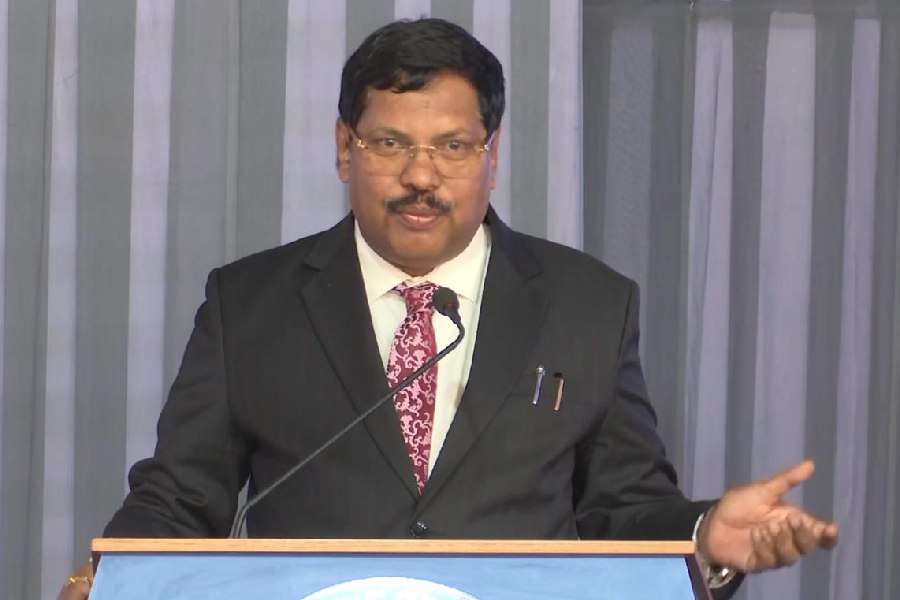New Delhi, Oct. 25: About 24 minutes of sexual activity will burn calories claimed by about 10 minutes of moderate exercise on a treadmill, according to a study that scientists say is the first to measure energy expenditure during sex.
Researchers at the University of Quebec in Montreal, Canada, have calculated that young couples expend on average about 85 kilocalories (kCal) during a session of sexual activity, with significant differences between men and women.
Their study, published today in the journal PLOS One, found that the absolute energy expenditure through 30 minutes of moderate exercise on a treadmill was about 245 kCal, again with large differences between men and women.
“Our study establishes that sexual activity may be considered at times as a physical exercise,” said Antony Karelis, lead study author and a University of Quebec researcher who specialises in kinesiology or the science of human movement. “But it cannot replace regular exercises like the treadmill,” Karelis added.
While scientists have investigated the physiological effects of sexual activity for decades, all earlier studies measured the heart rate and the blood pressure to determine the intensity of exercise during sexual activity.
Karelis and his colleagues have pointed out that sex is a “non-steady-state activity”, which means the heart rate-blood pressure relationship may not remain linear through a session of sexual activity. This makes the heart rate and blood pressure unreliable indicators of energy expended. The researchers also said equipment used to track heart rate and blood pressure may have interfered with performance — and thus energy expenditure.
In their study, the Quebec researchers asked 21 heterosexual couples to wear portable armbands during their sessions on the treadmill and during sexual activity. The armband contained an accelerometer, a heat flux sensor, and temperature sensors to capture data which was combined with parameters such as body weight and height of the volunteers to calculate energy expenditure.
The men and women who volunteered for the study were between 19 years and 30 years of age, and had been in relationships with their partners for six months to 24 months. This is also the first effort to directly observe energy expenditure in the couples’ home environment, Karelis said.
The study found the average energy expended was 101 kCal, or 4.2 kCal per minute, in men, and 69 kCal, or 3.1 kCal per minute, in women. The sexual activity, which on average lasted 24 minutes, was defined as the onset of foreplay, intercourse, orgasm by either partner, and ended at the couple’s discretion.
The researchers say their study busts a long-standing myth that sexual activity can use up 100 kCal to 300 kCal. The average energy expenditure observed, Karelis said, was what would be equivalent to calories lost through jogging at about 6km per hour.
However, the researchers found that during some sessions, a few participants were able to surpass the energy expenditure on the treadmill. One man, Karelis said, had an energy expenditure of 300 kCal during a session of sexual activity.
“The significance of this study lies in the quantification of calories used up during sexual activity,” said Dorairaj Prabhakaran, a senior cardiologist and professor of chronic disease epidemiology at the Public Health Foundation of India, New Delhi.
Cardiologists typically ask survivors of heart attacks to take a treadmill exercise test before they are encouraged to engage in sexual activity. “The treadmill test serves as a measure of their capacity for exercise,” Prabhakaran said. The energy expenditure values yielded by the new study, if validated, could allow clinicians to calibrate treadmill tests for survivors of heart attacks, he said.
A 30-minute session on the treadmill consumed 245 kcal, about three times the average 85 kCal lost during the average 24 minutes of sexual activity. “So it’s equivalent to about 10 minutes on a treadmill,” Prabhakaran said.
The Quebec researchers have said health professionals should consider sexual activity as possible components of intervention programmes for a healthy lifestyle.They said their study observed no differences between men and women for their perceptions of effort, fatigue, appreciation and pleasure. And virtually all — 98 per cent — of participants of the study described sexual activity more pleasurable than treadmill.









